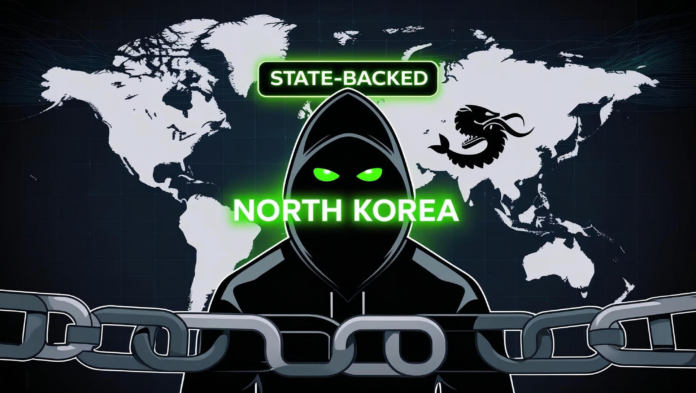Kraken, the well-known cryptocurrency exchange, recently revealed a serious breach attempt involving a North Korean hacker posing as an engineering candidate. The hacker’s goal was clear: infiltrate Kraken’s operations for espionage purposes. Yet, this story isn’t just about the hacker’s attempt to penetrate a major crypto exchange. It’s a sharp reminder of the growing risks faced by tech companies, especially in the digital age where cyber threats are becoming increasingly sophisticated and state-backed operations are on the rise.
The Kraken team handled the situation expertly, discreetly advancing the interview process to verify the threat. They identified numerous red flags, gathered key intelligence, and exposed the plot before any damage could be done. This was not a simple phishing attempt; it was a calculated effort by a state-backed hacker to gain access to sensitive information and potentially disrupt the operations of a leading player in the crypto space. The fact that this was North Korean-backed adds another layer of complexity, as the country has a well-documented history of using cyber warfare tactics to further its political and economic agenda.
What makes this case particularly alarming is the audacity of the attacker. Posing as a legitimate candidate for an engineering role, the hacker was able to deceive initial interviewers and move further along the process. It highlights a new front in the cyber battle — the use of social engineering tactics to bypass traditional security measures. The hacker, who was part of a highly sophisticated and organised group, was looking to exploit any weakness within Kraken’s infrastructure, a problem that every tech company, no matter how large, is vulnerable to.
This breach attempt aligns with the larger global threat landscape, where cyberattacks have become an everyday occurrence. While most organisations are focused on traditional security measures, many fail to consider the insidious threat posed by supply chain vulnerabilities. These vulnerabilities can allow hackers to gain access to entire networks through trusted suppliers or contractors. In Kraken’s case, the threat wasn’t only about a direct attack on their systems but about the potential for an insider threat via someone they believed to be a legitimate job applicant.
This raises an important question for tech companies and government agencies alike: how do you protect your organisation from such subtle, well-executed attacks? Many organisations invest heavily in firewalls, encryption, and antivirus software, but these defences often fail to account for the human element, which is where hackers are increasingly finding their success. The real challenge lies in identifying red flags that indicate someone might be attempting to infiltrate the company under false pretenses.
Dominic Williams, the founder of Dfinity, weighed in on the situation, suggesting that only fully decentralised systems can offer a true defence against such threats. He argued that decentralisation, a hallmark of blockchain technology, holds the key to mitigating the risks posed by cyberattacks. In his view, decentralisation creates multiple points of resistance, making it harder for any single entity — including state-backed hackers — to compromise an entire system. This comment underscores the growing conversation around decentralisation as a solution to many of the vulnerabilities that exist in today’s highly centralised digital infrastructure.
Williams’ response is a direct challenge to the prevailing model of centralised systems, which dominate much of the tech world. Centralised systems often rely on a single point of failure — a flaw that cybercriminals, including state-backed actors, can exploit. Decentralised systems, on the other hand, are designed to operate without a single point of control, making it far more difficult for attackers to infiltrate or sabotage the entire network. However, Williams’ comment also brings the issue of software supply chain attacks to the forefront. Even decentralised systems are not immune to these types of breaches. For decentralisation to truly be a solution, it must evolve to address the specific risks posed by the increasingly complex software supply chain.
The broader implication of Williams’ statement is clear: decentralisation is more than a buzzword; it’s becoming an essential aspect of cybersecurity strategy. As cyber threats grow in sophistication, businesses, governments, and tech companies must reassess how they approach security. The traditional model of centralised systems is no longer enough to protect against the state-backed, highly skilled hackers who are targeting critical infrastructure.
In Kraken’s case, decentralisation could have helped mitigate the risk of a breach. If Kraken had operated on a fully decentralised platform, the hacker’s access might have been limited, or at least harder to execute. Decentralisation introduces transparency and accountability, making it more difficult for attackers to gain the trust they need to infiltrate the system. It also allows for greater collaboration across nodes in the network, improving the chances of spotting and responding to threats in real-time.
Yet, even decentralised systems aren’t immune to risks. Williams’ comment about supply chain attacks points to a significant blind spot in the tech world’s current security posture. A supply chain attack is when an attacker targets a trusted supplier or third-party vendor in order to compromise the security of a larger system. These attacks can be devastating because they often target critical software or hardware that is used by multiple organisations, making it easier for hackers to spread their influence across a wide range of systems.
In light of Kraken’s experience, it’s clear that decentralisation isn’t a silver bullet. It’s part of a broader security strategy that must include vigilance, detection, and rapid response to emerging threats. For companies like Kraken, which operate in the highly volatile and competitive cryptocurrency space, the stakes are particularly high. A successful hack could undermine user trust, disrupt operations, and result in significant financial losses. For decentralised networks to be truly secure, they must address vulnerabilities at every level, from the software development process to the end-users interacting with the network.
The situation also underscores the importance of collaboration between tech companies, governments, and security experts. The global nature of the threat requires a coordinated response, with a focus on sharing information and resources to combat state-sponsored cyberattacks. Kraken’s ability to spot the North Korean hacker before any damage could be done is a testament to the power of collaboration and quick action. It’s a reminder that, in the fight against cyber threats, no organisation is too big to fail.
In the end, the lesson from Kraken’s experience is clear: the threat of cyberattacks is real, and the risks are only growing. Whether centralised or decentralised, every system must be designed with security in mind, constantly evolving to stay one step ahead of attackers. As Dominic Williams correctly pointed out, decentralisation offers a unique opportunity to bolster cybersecurity, but it must be part of a larger, more comprehensive approach. For tech companies and organisations worldwide, the stakes are too high to ignore the growing risks in cyberspace.


